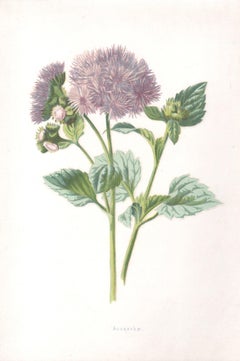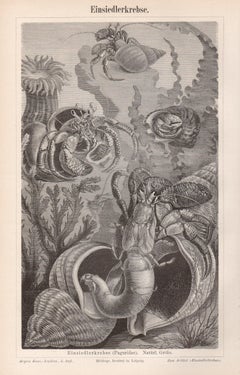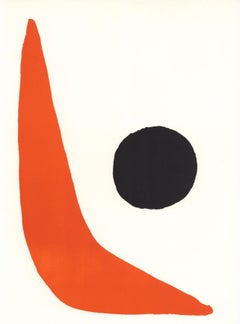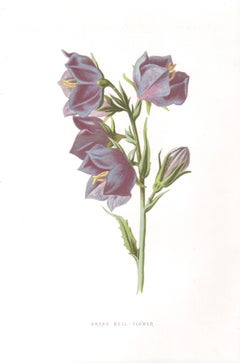Vertical Still-life Prints
1920s Impressionist Still-life Prints
Drypoint, Etching
21st Century and Contemporary Still-life Prints
Digital
Late 19th Century Naturalistic Still-life Prints
Lithograph
Late 19th Century Naturalistic Still-life Prints
Engraving
1960s Modern Still-life Prints
Lithograph
Late 19th Century Naturalistic Still-life Prints
Lithograph
Late 20th Century Modern Still-life Prints
Lithograph
Late 19th Century Naturalistic Still-life Prints
Lithograph
Mid-18th Century Naturalistic Still-life Prints
Engraving, Mezzotint
Late 20th Century Contemporary Still-life Prints
Lithograph
Late 19th Century Naturalistic Still-life Prints
Lithograph
1920s Cubist Still-life Prints
Lithograph, Stencil
2010s Contemporary Still-life Prints
Etching
2010s Contemporary Still-life Prints
Etching, Aquatint, Intaglio
21st Century and Contemporary Contemporary Still-life Prints
Archival Paper, Color, Etching, Intaglio, Drypoint, Aquatint
1960s Modern Abstract Prints
Lithograph
1950s Modern Abstract Prints
Lithograph
1990s Surrealist Landscape Prints
Lithograph
1980s Conceptual Abstract Prints
Screen
1950s Modern Landscape Prints
Lithograph
Late 19th Century Naturalistic Still-life Prints
Lithograph
1970s Contemporary Landscape Prints
Etching
1990s Contemporary Landscape Prints
Mezzotint, Aquatint
1790s Victorian Still-life Prints
Watercolor, Engraving, Intaglio
Mid-20th Century Abstract Abstract Prints
Color, Lithograph
Mid-18th Century Naturalistic Still-life Prints
Engraving, Mezzotint
Mid-19th Century Naturalistic More Prints
Engraving
Late 19th Century Naturalistic Still-life Prints
Lithograph
Late 19th Century Naturalistic Still-life Prints
Lithograph
1980s Contemporary Still-life Prints
Inkjet
2010s Contemporary Still-life Photography
Paper, Archival Paper, Rag Paper, Monotype, Photogram
21st Century and Contemporary Contemporary Color Photography
Archival Ink, Archival Paper, Photographic Paper, Giclée, Archival Pigment
1980s American Realist Still-life Prints
Lithograph, Offset
1950s Cubist Abstract Prints
Lithograph
1950s Fauvist Figurative Prints
Lithograph
19th Century Still-life Prints
Ink, Paper
1950s Cubist Abstract Prints
Lithograph
Early 20th Century Naturalistic Still-life Prints
Lithograph
Mid-19th Century Naturalistic More Prints
Engraving
1910s American Modern Still-life Prints
Lithograph
2010s Still-life Prints
Archival Paper
21st Century and Contemporary American Modern Still-life Prints
Mezzotint
1960s Contemporary Still-life Prints
Offset
1970s Still-life Prints
Screen
1980s Modern Abstract Prints
Lithograph
Early 20th Century Naturalistic Still-life Prints
Lithograph
2010s Abstract Expressionist Still-life Prints
Paper, Monoprint
1960s Fauvist Still-life Prints
Lithograph
2010s Contemporary Still-life Prints
Paper, Archival Paper, Rag Paper, Monotype, Photogram
21st Century and Contemporary Still-life Prints
Acrylic, Archival Pigment
Mid-20th Century Modern Figurative Prints
Offset
1950s Cubist Abstract Prints
Lithograph
1980s American Impressionist Still-life Prints
Lithograph
1990s Surrealist Portrait Prints
Lithograph
Mid-18th Century Naturalistic Still-life Prints
Engraving, Mezzotint
21st Century and Contemporary American Modern Still-life Photography
Archival Pigment
2010s Contemporary Still-life Prints
Paper, Archival Paper, Rag Paper, Monotype, Photogram
21st Century and Contemporary Abstract Abstract Prints
Color, Digital
21st Century and Contemporary Contemporary Still-life Prints
Archival Paper, Color, Etching, Intaglio, Aquatint
1990s Surrealist Landscape Prints
Lithograph




